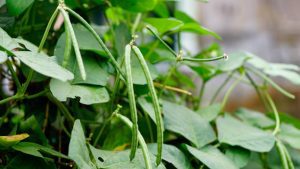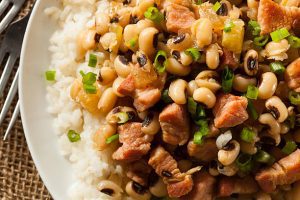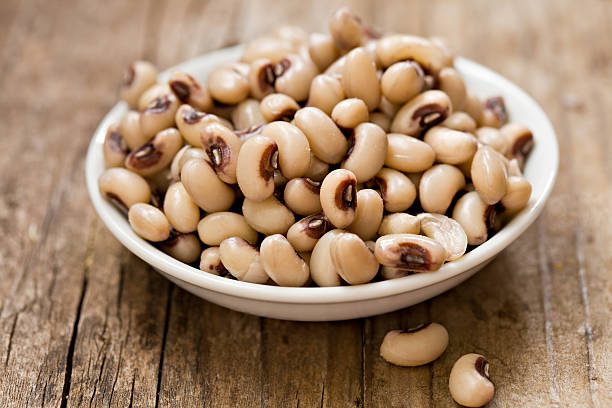Beans (Cowpea) interchangeably referred to, also scientifically identified in its:
Preferred Botanical Name as – Vigna unguiculata
Preferred Common Name: Beans. black eye pea, southern pea and niebe in some parts of the world.
Local Common Name; In Nigeria, some tribes call it:
- Ibibio: Okoti
- Yoruba: Awon ewa
- Igbo: Agwa
- Hausa: Wake
Origin Of Beans
Beans is an ancient annual legume, rich in protein and from findings, have been grown as food for over 9000 years.
Beans have its origins in West Africa, and the broad wild beans (fava beans) variants were grown in Afghanistan and the Himalayan foothills.
It is also widely grown in, Latin America, and the southern United States.
Beans are a good source of fibers, protein, complex carbohydrates, iron, and folates.
Beans have two major colors, white and red kidney beans, both are edible only when cooked.
They contain phytohaemagglutinin toxin in their raw form, which can cause poisoning with signs of nausea, vomiting, and diarrhea.
You can remove this by boiling the beans till it softens. Which may take at least 30 minutes at 100°C.
Cowpea is the most commonly planted and eaten variant of beans in Nigeria and West Africa.
It can also be referred to as southern pea, crowder pea, lubia, niebe, coupe, frijole, or blackeye pea.
Nutrient Composition Of Cowpea
Cowpea has a lot of nutritional value, making it well recommended for consumption. The nutrient content in 100 grams (100g) of cowpea are:
- Calories 336
- Total Fat 1.3g
- Sodium 16mg
- Total Carbohydrate 60g
- Dietary Fiber 11g
- Total Sugars 7g
- Protein 24g
- Potassium 1112mg
Medicinal Properties and Uses Of Cowpea
There are a lot of uses and medicinal benefits in cowpea. Below are some of those benefits and properties:
- It contains a high amount of protein which helps in bodybuilding.
- It has high fiber content, which helps to reduce blood sugar.
- It helps protect the heart against possible causes of heart failure.
- It acts as a detoxifier due to its antioxidant content.
- It helps induce sleep.
- It helps in weight management.
- It helps to improve the skin.
- It makes bone healthier due to its magnesium content.
- It helps in cancer prevention.
- It helps boost the immune system.
How To Grow Cowpea Yield Information Of Cowpea

You can harvest the seeds after about 100 days, and the whole plant can be used as forage after about 120 days.
Similarly, the leaves can be plucked in four weeks.
Cowpea grows in pods, and each pod can have between 3 to 8 seeds of cowpea inside.
The pods are usually allowed to dry and open up then the seeds will be removed.
Yield depends on the number of cowpeas planted.
Nursery And Transplant Requirements Of Cowpea
Beans nursery should be cultivated deep enough to ensure that no barrier to penetration of the soil by the taproot exists.
Soil crusting under certain soil and environmental conditions may adversely affect beans. The seeds are prone to decay in cool and wet soils.
For better results, plant cowpea when the soil temperatures are above 65°F, and soil moisture will aid germination and growth.
Transplanting can be done about two weeks after its planted. Remove seedlings with a large amount of soil to help prevent transplant shock.
Soil And Sun Requirements Of Cowpea
Although cowpea can grow on most soils and soil conditions like rocky, sandy, and even clay soil.
It will grow best on well-drained sandy loams or just sandy soils with a soil pH between 5.5 to 6.5.
A loose soil that is rich in organic matter is suitable for cowpea.
Before planting, turn the soil to a depth of 6 to 8 inches and add aged compost.
Beans grow best in full sunlight, but partial shade is also suitable.
Watering Requirements Of Cowpea
An inch of water weekly is most usually needed for the beans plant to aid growth. Provide manual irrigation for the plant if it does not get sufficient rainwater.
Beans does not require much watering as this may lead to plants wilt, infection and death.
Planting and Spacing Requirements Of Beans
Beans require fertile and well-drained soil for best growth. Before planting, mix some organic materials and a complete fertilizer into the soil.
The row spacing requirement is 18-24 inches apart; space plant 2-3 inches apart in the row and plant seeds 1 inch deep.
Harvesting Of Cowpea
When beans begin to rattle in the pod, they are due for harvest. Harvesting is done by hand pulling the plants and hanging them from the roots.
Cut or snap young and tender bean pods about 3 inches long, while the seeds have not yet bulged, nor has it grown plump.
Bulging bean pods show they have passed their peak. When cutting the pods off the plant, ensure not to tear pods from the branches.
Dry cowpeas are best harvested before the pods split open and the beans spill out. Harvest of dry will occur 90 to 100 days after planting.
Storage Of Cowpea
Beans are better stored in airtight containers but before storing them, ensure that they are dry. They can last up to one year when stored properly.
Diseases and Pests Of Cowpea
1. Anthracnose
This is a common disease of beans caused by fungi, and symptoms include sunken brown lesions on leaves and lesions covered in pink spore masses during the wet period.
You can control planting resistant varieties and practicing good field sanitation.
2. Ascochyta Blight
This disease causes severe defoliation of plants; plants may die off. It is a fungi infection, and can be managed by planting disease-free varieties.
3. Bacterial Blight
Bacterial blight causes water-soaked spots on leaves that enlarge and become necrotic; lesions coalesce and give a yellow declaration.
It results from bacterial infection and is controlled by planting disease-free varieties.
4. Aphids
Aphids cause yellowing of leaves and stunted growth. It is an insect and can be managed by removing affected parts. Check transplants for aphids before moving to the field.
5. Root-Knot Nematode
A nematode causes this, and symptoms include yellowing the plant that wilts in hot weather.
It is controlled by planting resistant varieties, checking plants frequently for signs, and removing affected plants.
Conclusion

Beans are great source of protein just like fish, meats, eggs and the likes. It tastes great too and is great for both kids and adults.
It’s planting can be a financially viable business idea if done commercially.
